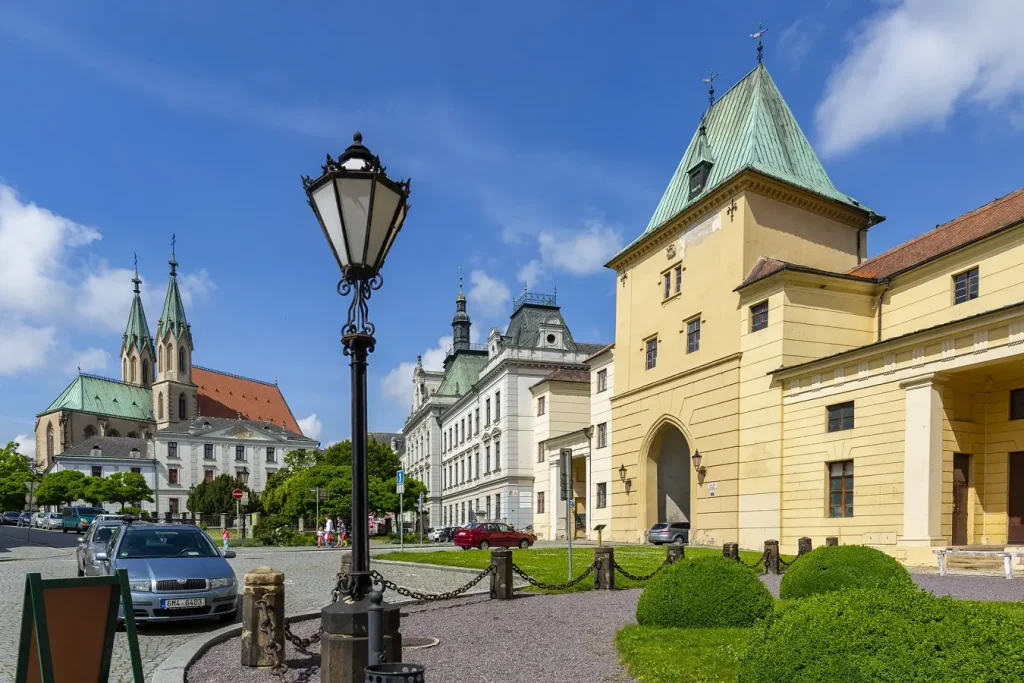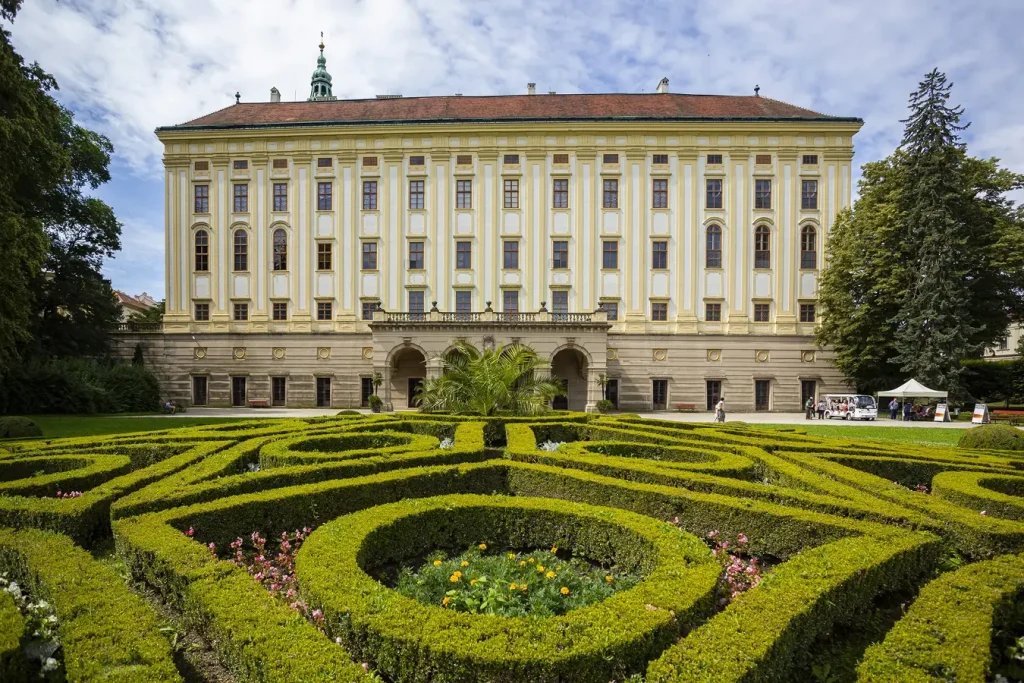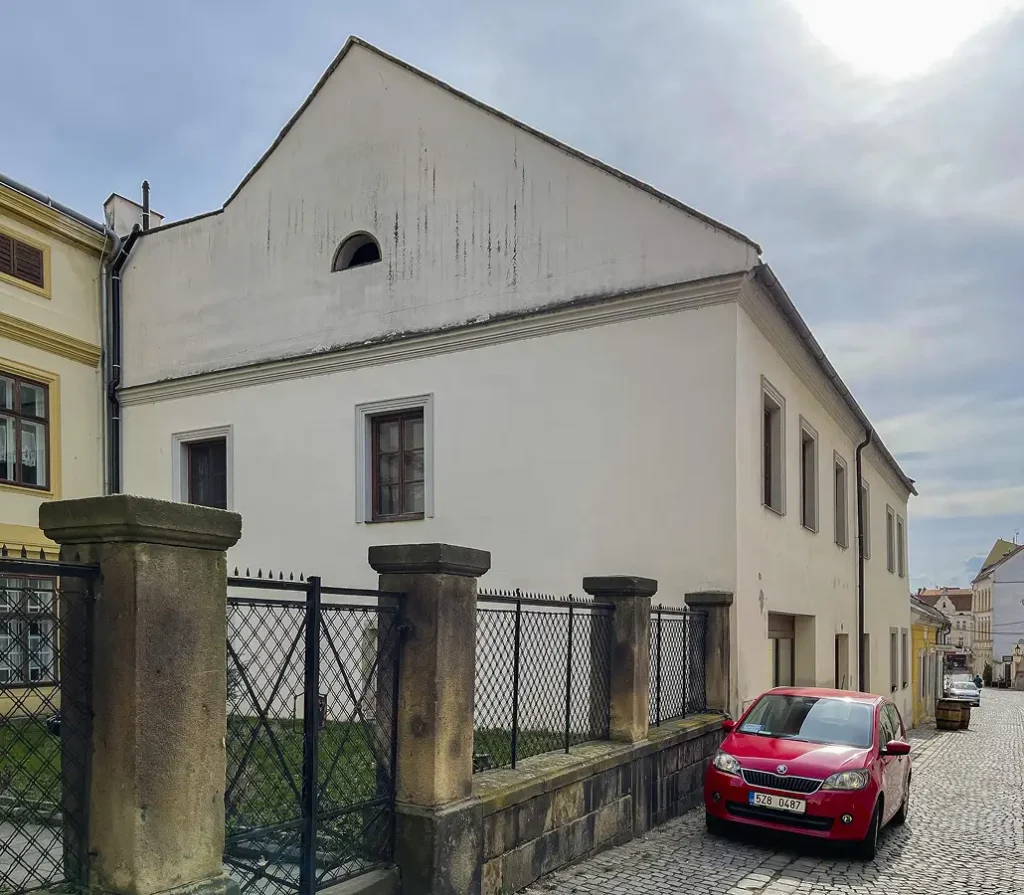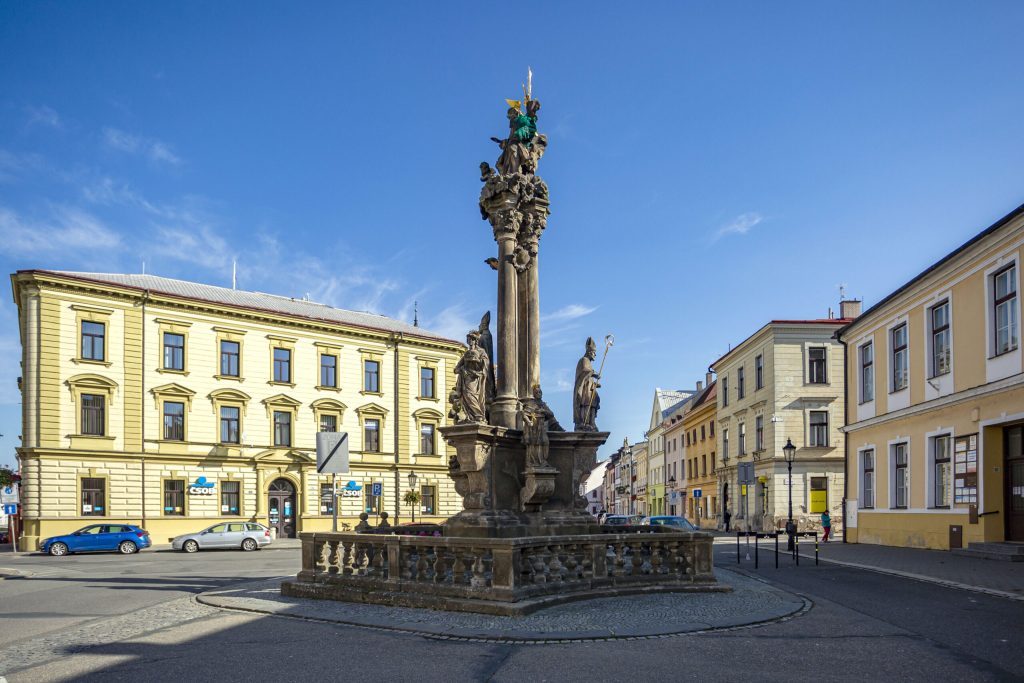Route Length: 1.3 km
Duration: 30 min (without guided tours of individual locations)
The History and the origins of the town are closely connected to the Church. It was originally a market village which arose at a ford across the river Morava on the crossroads of two trade routes. Kroměříž (the first mention under its Latin name “Cromesir” dates to 1141) became a town sometimes between the years 1256 and 1265 after the Olomouc bishop Bruno von Schauenburg came to power. Not only did he have the Church of St. Maurice built and the Church of the Assumption of the Virgin Mary renovated, but it was he who even had a Gothic castle built on the site of today’s Archbishop’s Chateau, which became the principal summer residence of the bishops of Olomouc. He also moved part of the administration of the diocese from Olomouc to Kroměříž. In the rich and fertile region, Kroměříž flourished thanks to the favour and support of the Church and due to its location.
Its development was affected by the Thirty Years’ War and repeated plundering by Swedish troops (between the years 1643 and 1645). Kroměříž recovered during the rule of bishop Karl II von Liechtenstein‑Kastelkorn. In the second half of the 17th century, the bishop raised the town from its ruins and made Kroměříž into an important town once again (the town became “the Pearl of Moravia”). He had the castle rebuilt into a luxurious residence and the garden into an English park. He had the town walls repaired and founded the Mint. Behind the town walls, he created a Baroque garden (a so‑called “Libosad”), today known as the Flower Garden. The most prominent ecclesiastical buildings in town: the Church of St. Maurice and the Church of the Assumption of the Virgin Mary, were supplemented with the Piarist Church of St. John the Baptist in the middle of the 18th century. Together with the Archbishop’s Chateau and the Town Hall building, they are the most prominent landmarks of the town. All are worth visiting and seeing, both from the outside and from the inside.














